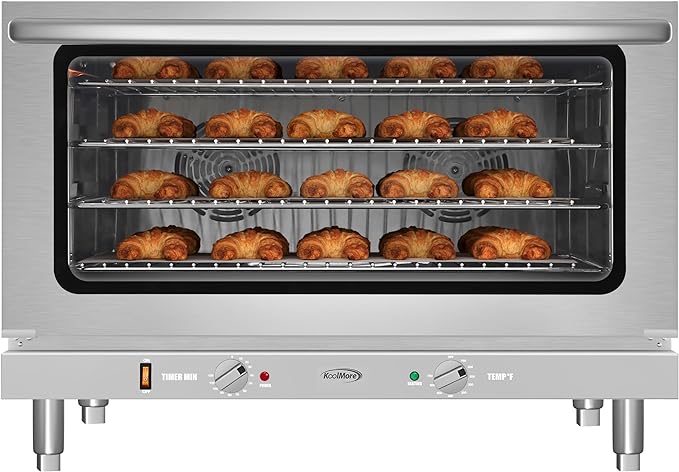[Commercial Electric Oven] Key Differences Between Commercial and Home Ovens
1. Size of the Oven:
Household ovens generally don’t need to be too large. Available models range from under 10 liters to over 40 liters, catering to different family sizes. In contrast, commercial ovens are typically much larger to meet the demands of businesses.
2. Temperature Control:
Home ovens, due to their smaller size, typically maintain stable and even temperatures. On the other hand, commercial ovens have stricter requirements for temperature stability and uniformity, as various commercial uses demand different temperature ranges. For example, pizza baking requires a specialized pizza oven. The Vantage-Oven offers precise temperature control from 50°C to 250°C, allowing for optimal cooking flexibility.
3. Power Consumption:
One significant difference is the power requirement. Commercial ovens consume significantly more power than home ovens. Standard household electrical systems often cannot support the power demands of commercial ovens, and there is no need for high-powered ovens in typical home use.
Commercial Oven Sizes
1. Size for Baking Pizza (560*580*540mm):
This commercial oven is designed with a double-sided layout, ideal for pizza baking. Its 380V power ensures even heating during cooking and allows precise temperature control. Despite its high performance, it is reasonably priced.
2. Size for Baking Pastries (92X700X720mm):
This oven is best suited for baking pastries. It offers efficient power usage, even heat distribution, and adjustable temperature controls for better baking results. It also features overheat protection and an easy-to-use half-spring door mechanism.
3. Size for Barbecue Skewers (550*250*280mm):
Although compact, this oven is highly effective for grilling kebabs, making it a popular choice for barbecue restaurants. It helps save time, labor, and resources while being affordably priced.
Essential Knowledge for Buying a Commercial Oven
1. Indoor Power Supply:
The voltage requirement of your oven must match the available power supply. If the voltage needed by the oven is too high and the local voltage cannot meet this, the oven may not function properly. Typically, electric ovens require between 500 and 1200W of power.
2. Oven Components:
Pay attention to the pipe layout and shelving when purchasing. Pipe layouts include straight, U-shaped, and M-shaped pipes. Straight pipes are preferred as they tend to provide more even heating. U-shaped or M-shaped pipes may cause uneven temperatures inside the oven. Most ovens come with 3 to 5 shelves. Ovens with four or more shelves are better for achieving evenly baked food.
3. Appearance:
Check if the oven’s exterior paint is smooth and uniform without scratches or peeling. Ensure that the oven door closes tightly and that the switches work smoothly. Since you will often observe food through the oven glass, ensure the glass is transparent enough for easy viewing.

